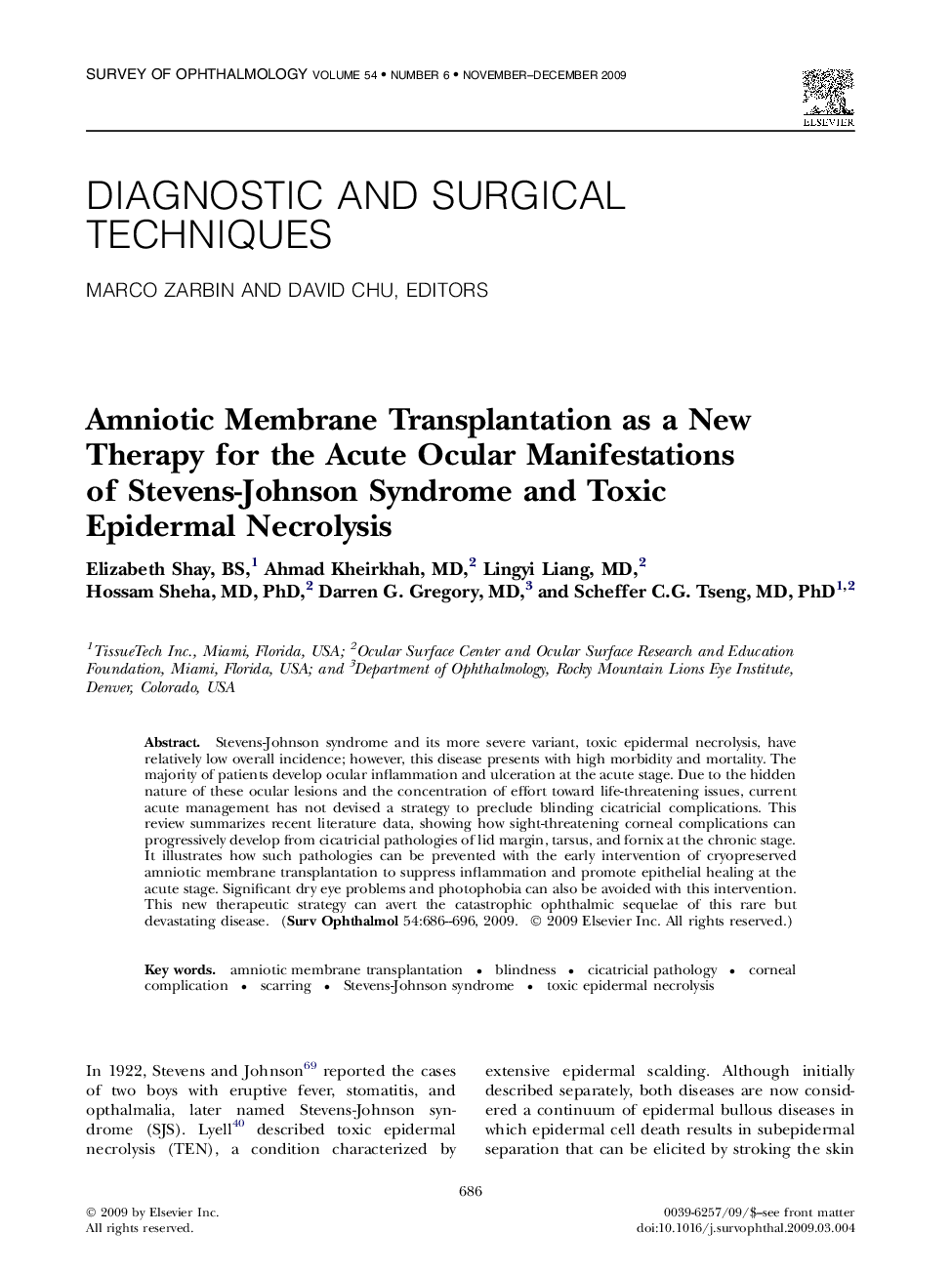| Article ID | Journal | Published Year | Pages | File Type |
|---|---|---|---|---|
| 4032827 | Survey of Ophthalmology | 2009 | 11 Pages |
Stevens-Johnson syndrome and its more severe variant, toxic epidermal necrolysis, have relatively low overall incidence; however, this disease presents with high morbidity and mortality. The majority of patients develop ocular inflammation and ulceration at the acute stage. Due to the hidden nature of these ocular lesions and the concentration of effort toward life-threatening issues, current acute management has not devised a strategy to preclude blinding cicatricial complications. This review summarizes recent literature data, showing how sight-threatening corneal complications can progressively develop from cicatricial pathologies of lid margin, tarsus, and fornix at the chronic stage. It illustrates how such pathologies can be prevented with the early intervention of cryopreserved amniotic membrane transplantation to suppress inflammation and promote epithelial healing at the acute stage. Significant dry eye problems and photophobia can also be avoided with this intervention. This new therapeutic strategy can avert the catastrophic ophthalmic sequelae of this rare but devastating disease.
